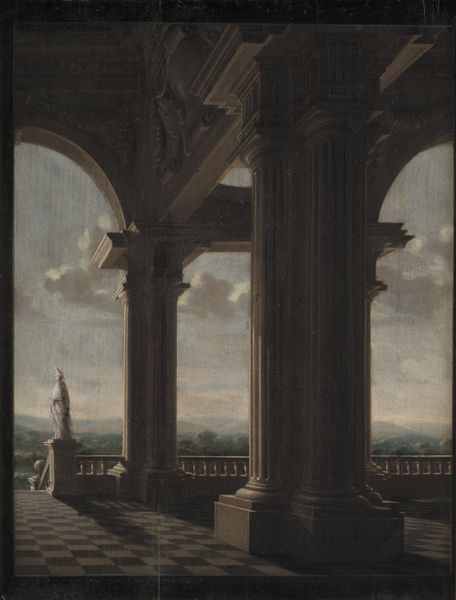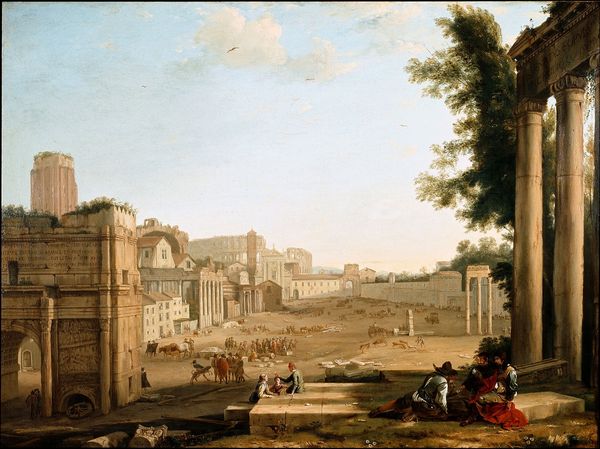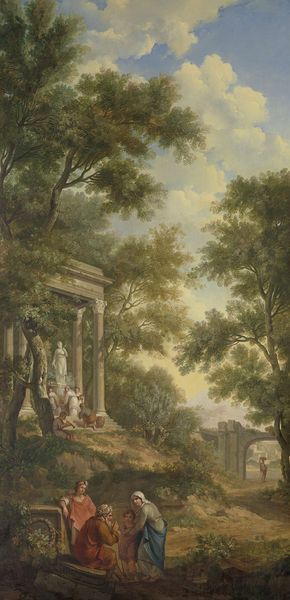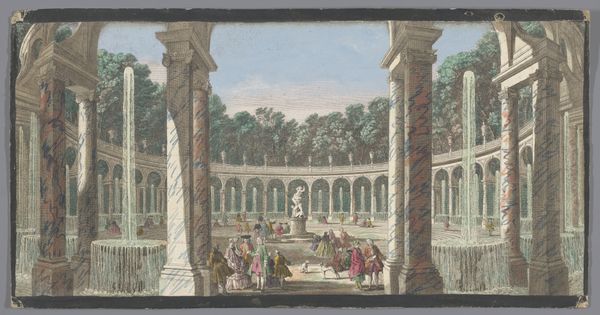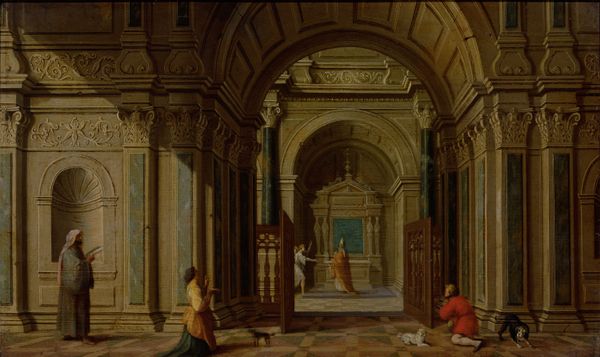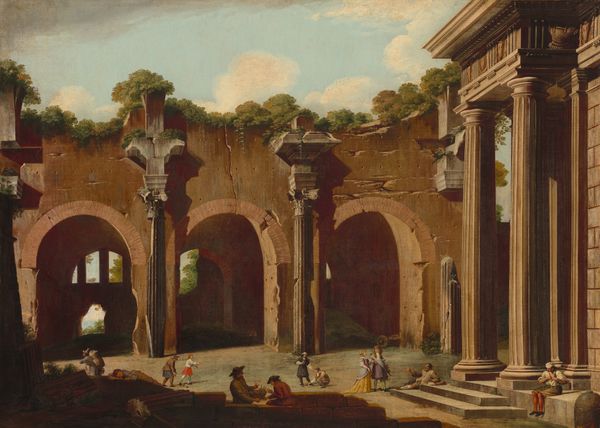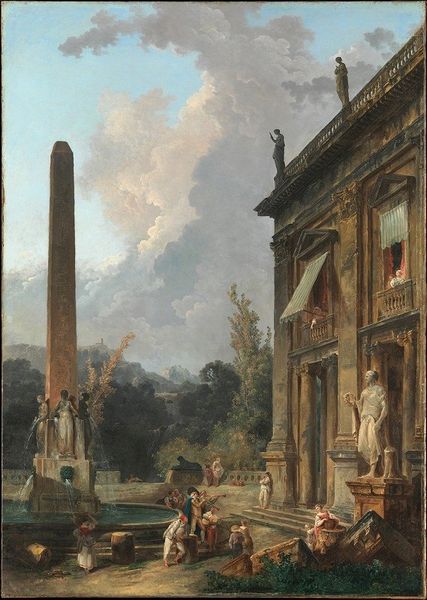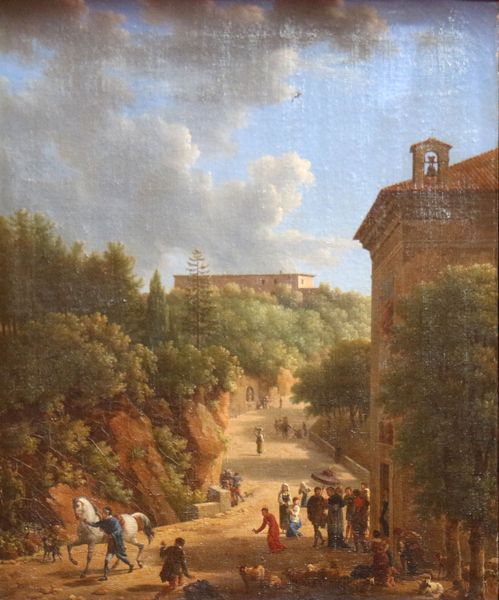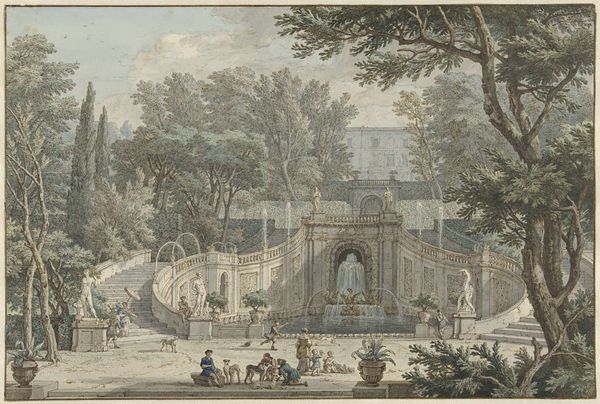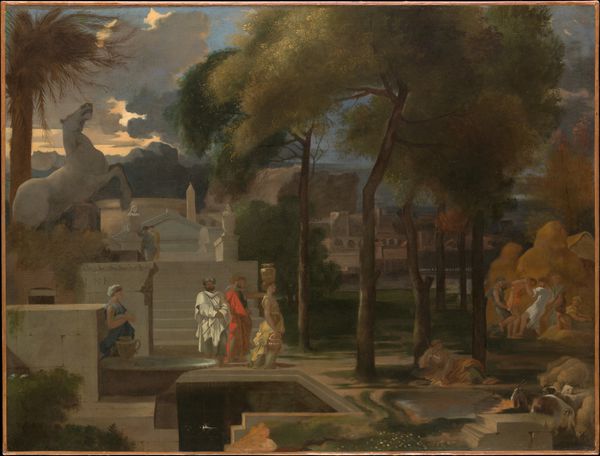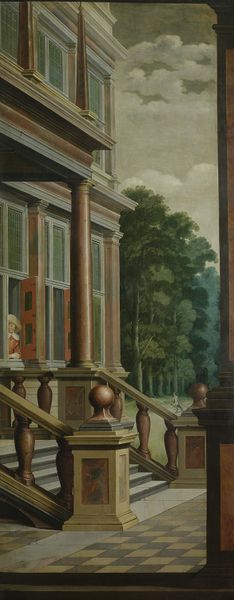
painting, oil-paint
#
garden
#
statue
#
painting
#
oil-paint
#
landscape
#
figuration
#
oil painting
#
genre-painting
#
rococo
Dimensions: height 66 cm, width 56 cm
Copyright: Rijks Museum: Open Domain
Editor: Here we have Cornelis Troost's "An Amsterdam Canal House Garden," painted around 1740 in oil. I'm immediately drawn to how the artist creates almost a stage-like setting, with the figures positioned as though in a play. What narratives do you think are unfolding in this artwork? Curator: It's perceptive of you to identify that theatrical quality. Troost, with his focus on the placement of figures and the Rococo style, certainly presents us with more than just a landscape. Consider how gardens themselves often functioned symbolically in this era. Can you detect some cultural associations that may apply here? Editor: Well, there's a fountain with a statue. Fountains often stand for purity or life-giving energy...and statues of mythological figures would point back to classical ideals? Curator: Precisely! And notice where they are placed in relationship to the figures. The arrangement within the painting becomes very significant. The statue is central, almost an object of adoration, while the figures hint at a flirtatious encounter within this cultivated "paradise." Don't overlook the servant to the side either; her placement hints at voyeurism or detachment. It all builds towards a specific visual story. Do you think that the symbolism would carry emotional weight with people of that time? Editor: It gives an insight into the lives and interests of people from that time. What really catches my eye is the placement of the birdcage. Is that more symbolism? Curator: Yes, the cage! Consider the implications of enclosure and freedom, often conveyed in paintings. Ask yourself, who, or what, is metaphorically caged within this scene? The possibilities expand our understanding of the era, class structures, or the constraints placed on individuals in relationships. It can make us appreciate how a simple image might carry many coded messages that endure through time. Editor: I hadn’t thought of it like that, but it’s so clear now that you point it out. Every element is strategically placed to tell a complex story. Curator: Indeed. It reinforces how art can offer potent insights into human psychology across centuries.
Comments
rijksmuseum about 2 years ago
⋮
The garden of this Amsterdam canal house radiates tranquillity and prosperity. At centre is a gilded statue of Fortuna, symbol of the family’s good fortune. In the bright sunlight, the master of the house picks grapes with his daughter, while in the foreground in the shade a maidservant cleans vegetables. A tame parrot looks on, hoping for a tasty tidbit.
Join the conversation
Join millions of artists and users on Artera today and experience the ultimate creative platform.

